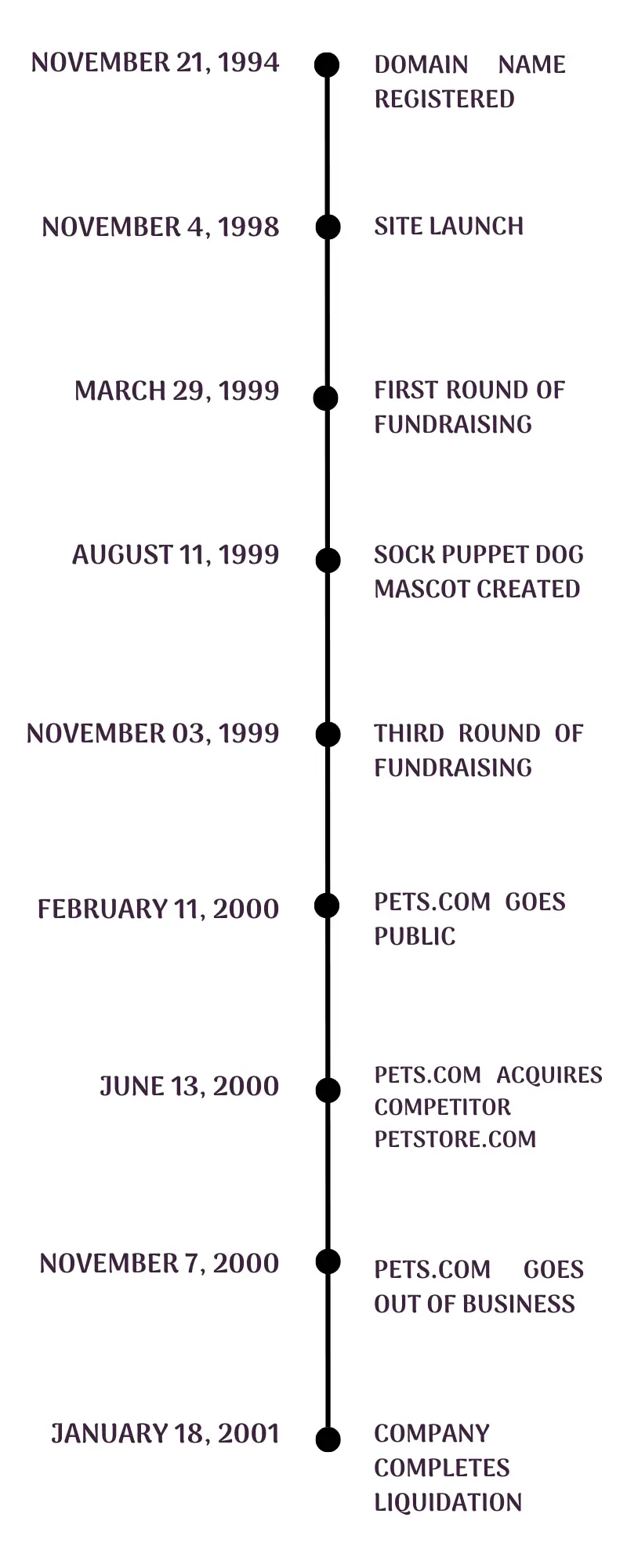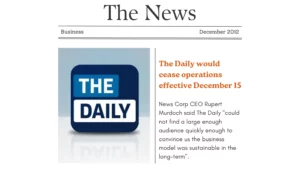The Pets.com failure, mostly attributed to the dot-com bubble, is still one of the most disastrous product development failure stories.
An e-commerce company with an aim to become people’s first choice for pet supplies online, Pets.com was founded in 1998.
Pets.com was the first company to offer a convenient way for pet owners to purchase food, toys, and other pet essentials online without stepping outside.
Users now had the choice to browse various categories on their website, select their preferred pet products, and have them conveniently delivered to their homes.
So naturally, it accumulated a revenue of $619,000 in 1999.
And if you are a 90s child, you surely remember the sock puppet mascot commercials from your childhood. These mascots became a symbol of recognition for Pets.com.
In fact, much after the turn of the tide, these sock puppets kept Pets.com alive.
But what exactly happened that led to Pets.com failure?

Ineffective Business Strategy
One of the reasons for the company’s demise was its ineffective business strategy and excessive spending.
Pets.com spent millions on advertising and marketing during its short lifetime. Despite only earning $619,000 in revenue, the business spent more than $70 million from February to September 1999.
Furthermore, the company sold its pet products at a third of their original purchase price, believing that huge discounts and free shipping would instantly gain a large customer base. The same strategy had been used effectively by shoe seller Zappos, but Pets.com had not considered the expense of shipping its products. Items such as dog food, cat litter, and pet crates were heavy or bulky, making shipping very expensive.
Related Read: Business Innovation: The What, Why, How, and Where
High Operating Expenses
Pets.com was ahead of its time in the eCommerce industry. There were no fully prepared solutions for scalable eCommerce, warehouse management, or customer support in 1999. As a result, the company needed to hire more than 40 engineers. Their workforce hiring cost was high.
Cloud computing was also many years away, so the firm had to set up a server farm and hire even more employees to keep the website running. The lack of technology increased operating expenses even further.
On top of it, Pets.com was just burning through their venture capital ineffectively. Their advertising cost alone cost around 20 million dollars!
Related Read: Innovative growth strategy: How going B2C helped Orgalux become a success?
Lack of Research
Pets.com believed that more people would purchase pet supplies online. It failed to recognize that the market for home-delivered pet food was unprofitable due to a lack of sufficient research.
Although this is a more popular trend nowadays, consumers in 1999 preferred to purchase pet food in physical stores. This was done partially for convenience and partly because many people didn’t know how to buy something on e-commerce.
Furthermore, due to insufficient research, Pets.com was compelled to rely on several assumptions. The business felt that selling only pet products would be sufficient rather than focusing on an online supermarket that could sell pet supplies and other groceries.
They also believed that people preferred having such pet supplies delivered and were willing to wait a few days rather than go to the store and get them immediately.
Such assumptions led the company to miss the understanding of its target consumers.
Related Read: The CIO’s Role in Innovation: 2023 Edition
Immediate Arrival of Strong Competitors
Pets.com might have been the first to enter the market, but they weren’t able to remain the sole contributor for very long.
Within months of launching Pets.com, the pet supplies industry saw a huge rise in new players, such as petstore.com, petsmart.com, pettopia.com, petplanet.com, and so on.
Pets.com benefited from having the most valuable domain name in the online pet market, but its competitors benefited from other factors. Petsmart.com, for example, had brand recognition upon which to construct its website. And Pets.com couldn’t really offer any real USP.
Related Read: Innovation Program: 7 Tips & Tricks for Success
Inadequate Utilization of Amazon Affiliation
Jeff Bezos, Founder of Amazon, was very interested in the Pets.com project, and eventually, Amazon purchased a 54% majority stake in the company.
Julie Wainwright, CEO of Pets.com, called the affiliation a match made in heaven, and Pets.com gained confidence after becoming affiliated with Amazon.com and gaining access to Amazon’s powerful database of customer purchasing habits. Pets.com had an advantage over other competitors in the pet industry due to Amazon’s extreme brand recognition and popularity. Plus, Amazon has already proven its expertise in online product fulfillment. Unfortunately, this advantage was not fully utilized, and its competitors, such as Petsmart.com, continued to outperform Pets.com in terms of online traffic and income.
Related Read: Unleash Innovation Excellence: Learn from Amazon innovation strategy
Failure to Hold a Strong Market Position
Pets.com also neglected to position itself properly. The company must provide customers with a solid reason for its existence as well as meet a need. With a few notable exceptions, Pets.com only provided information on pets’ health, behavior, and grooming. Pets.com decided to compete with low prices, similar to its rivals, rather than employing a unique positioning approach. Throughout the company’s operations, this mistake resulted in the sale of products below cost.
Julie Wainwright, CEO of Pets.com, said in a statement, “It is well known that this is a very, very difficult environment for business-to-consumer Internet companies. With no better offers and avenues effectively exhausted, we felt that the best option was an orderly wind-down with the objective to try to return something back to the shareholders.”
Changing Market Conditions
Pets.com’s inability to adapt to changing market conditions and embrace innovative business models led to its downfall. Pets.com shut down in November 2000 after spending $300 million in less than two years. The site was shut down, and more than 300 people lost their employment.
Wrong Timing
Remember, we are talking about 1999 when the internet was new. The dot com bubble was around the corner, shipment costs were real, and delivery time spanned up to 8 to 10 days.
Waiting for more than a week for their pet supplies didn’t really excite people. They had the option to just buy it while coming back home from their work or during their leisurely walks.
Essentially, the Pets.com failure was a result of a series of bad business decisions and a lack of innovation at its core.



